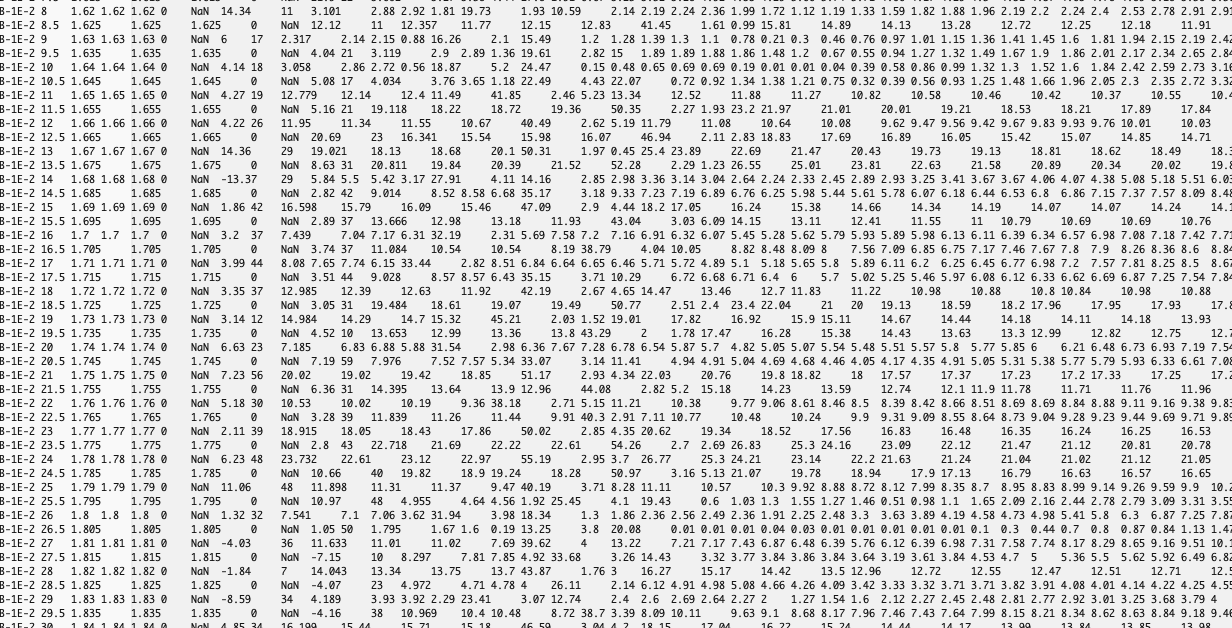The function datastore can be used to handle large collections of data. As an example, the modern multisensor core loggers for the automatic determination of physical and chemical properties of drill cores generates huge amounts of data within a very short time. An array with 80 variables, each with 50,000 measured values, is not unusual. In addition, the corresponding files contain mixtures of character strings for core section names, measurement dates and times, and comments from the laboratory technician who carried out the measurements, along with the actual numeric readings.
As an example we import the content of the file geoxrf.txt into the MATLAB workspace. The file looks like this in the editor:
Location Core Depth K Si ChewBahir 2A 0.30 975 1576 ChewBahir 2A 0.60 2785 9706 ChewBahir 2A 0.90 5469 9572 ChewBahir 2A 0.12 9575 4854 ChewBahir 2A 0.15 9649 8003
As we see the first line contains the header of the data. The first and the second column contains the location name and the name of the drill core. The third column contains the depth in the core. The fourth and fifth column contain numerical values representing X-ray fluorescence counts for potassium and silicon. The columns are separated by one or more spaces. We use the function datastore to create the datastore data without actually importing the data.
clear
data = datastore('geoxrf.txt');
Typing
data
yields a list of properties of data. We can read all of the data from the datastore using
dataxrf = readall(data)
which yields
dataxrf =
5×5 table
Location Core Depth K Si
_____________ ______ _____ ____ ____
{'ChewBahir'} {'2A'} 0.3 975 1576
{'ChewBahir'} {'2A'} 0.6 2785 9706
{'ChewBahir'} {'2A'} 0.9 5469 9572
{'ChewBahir'} {'2A'} 0.12 9575 4854
{'ChewBahir'} {'2A'} 0.15 9649 8003
If the file is too large to be loaded into memory, we can import only part of it. First we define the variables Depth and K we want to load and then we use readall again by typing
data.SelectedVariableNames = {'Depth','K'}
dataxrf = readall(data)
which yields
dataxrf = 5×2 table Depth K _____ ______ 0.3 975 0.6 2785 0.9 5469 0.12 9575 0.15 9649
Now we can use the properties of tables and their associated functions to convert the data into simple double arrays, e.g. by typing
depth = dataxrf.Depth potassium = dataxrf.K
which yields
depth = 0.3000 0.6000 0.9000 0.1200 0.1500
and
potassium =
975
2785
5469
9575
9649
Alternatively, we can use the function table2array to convert the table to a double precision array by typing
dataxrfarray = table2array(dataxrf)
which yields
dataxrfarray = 1.0e+03 * 0.0003 0.9750 0.0006 2.7850 0.0009 5.4690 0.0001 9.5750 0.0001 9.6490

